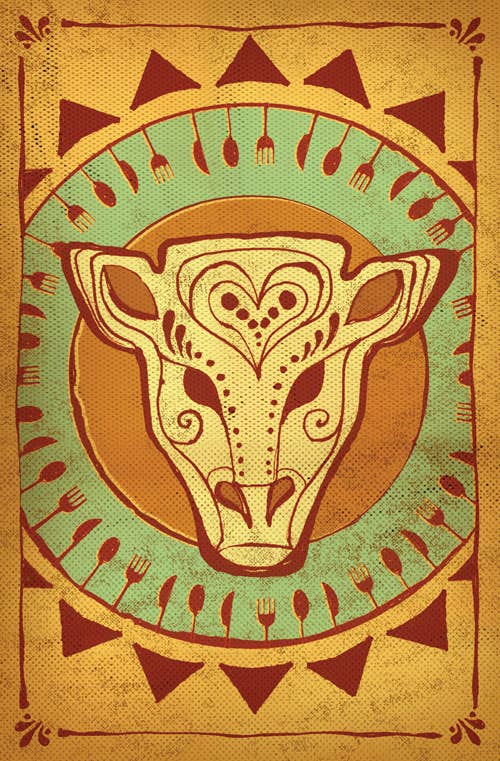
Death in the Afternoon: Birria in Jalisco
In Jalisco a family comes together, and occasionally clashes, over a beef stew like no other
This memory spans all of my life. We could place it in 1980, at the baptism of one of my cousins. Or in 1995, at the wedding of another cousin. Or even in 2007, at my first child's baptism. I could also relate this memory in the future tense, in 2016 or 2028. Every time my family has something to celebrate, we kill a calf. Its meat, wrapped in succulent blades of maguey leaf and steamed slowly over a wood fire, all but melts into a delicious stew called birria. This dish is the pride of my home state, Jalisco.
I have skipped something here, and it is not casual: It is the moment of the calf's sacrifice. Cieneguilla, my uncle Mario's ranch in the highlands, is where my family celebrates our parties. It is a dairy farm, and thus the slaughtered ones are always males, born by mistake within a system in which only females can be productive. As a kid, I was always at home playing soccer or watching TV the day before the celebrations, when a ranch worker stung the heart of the chosen one with an instrument like an ice pick. It must be done at least twelve hours before cooking the meat, to give the carcass time to bleed out completely. Only once did I witness the sacrifice, and what I remember, more than the blood or the brutal indifference of the act, is the laughter of the workers during the gutting of the animal, the jokes about handling the testicles, those classic and sad homophobic jokes so common in Mexico.
This memory is made of dust, the dust of the unpaved road we needed to travel from our town, Lagos de Moreno, to get to the ranch, long before the construction of the current road. The monotonous semiarid landscape of Los Altos de Jalisco: acacias, cactus, and the maguey plants that are birria's essence. Its cut blades, stripped of thorns, washed and charred, line the interior of the vessel where the calf is cooked. On my uncle's ranch, 50-gallon metal drums are used; water is poured on the bottom and a grill is placed inside, making an unbeatable makeshift steamer. The largest pieces of meat are placed in the bottom, the head in the center, and the small pieces on top. The top is then covered with more maguey leaves, so that the calf is thoroughly wrapped, and the whole thing is placed on a rack over a wood fire. You need to have a fire of medium intensity, one that is constant but never angry. Tightly close the steamer—a huge stone set on top is the perfect solution—and wait, depending on the weight and age of the animal, between two-and-a-half and four hours.
My family's birria is eaten with handmade tortillas, and with my Aunt Celia's famous sauce. It's just a tomato sauce cooked with chile de arbol, which, once blended, is mixed with salt, oregano, onions, and cilantro. The big secret is why Aunt Celia's sauce tastes like no other in the world, including those of my mother and the rest of my aunts, the flavor progressing in its particular way from herb to onion to the sweetness and burn of the chile. It's not an irrelevant secret: In Mexico you should never underestimate the power of sauces as a source of family rancor.
These are meals with a mass audience, with a never-ending line of ten to fifteen people at the kitchen's entrance. Children—and picky adults—eat the meat from the legs and the back, while the rest of the adults save ourselves for the moment when the beautiful calf skull arises from the huge drum, holding within the most treasured delicacies: the tongue, cheeks, eyes, and brains. It's a small reward for so many stomachs, so the negotiations are always difficult. I still remember my childhood's disgust when I saw my father and my uncles ingesting those parts. And to think that today I wouldn't mind forever falling out with a relative over them. In my family, growing up means learning to fight for the head.
Juan Pablo Villalobos is the author of Down the Rabbit Hole (Farrar, Straus & Giroux, 2012)
Keep Reading
Continue to Next Story










